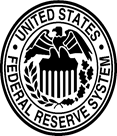Fed’s Changed Policy Approach And Gold

Has the Fed modified its monetary policy stance? What would it mean for the gold market?
Markets Don’t Believe The Fed
As we have already pointed out, the Federal Reserve was surprisingly hawkish in June. The FOMC raised interest rates by 25 basis points and signaled another hike this year (and three more in 2018). The U.S. central bank also announced that it would start unwinding its balance sheet soon. However, investors remained unconvinced. The market odds of a December hike are only 53 percent. The reasons behind this skepticism are soft economic data and the poor track record of the Fed keeping its hawkish promises.
But They Should
Indeed, for a long time, the Fed repeatedly walked away from its previous hawkish guidance on interest rates. For several months, the U.S. central bank looked for excuses to not change its ultra dovish its monetary policy. It finally delivered a hike in December 2015, when its credibility was at stake. But after this move, it paused for another year. However, something happened then. Since the U.S. presidential election, the Fed has already hiked three times. Now, we may say that the FOMC members seek excuses to tighten its monetary policy. In other words, despite signs of an economic slowdown, the Fed is determined to continue its tightening cycle. So much for the Fed being data dependent.
Why Such Change?
The Fed’s reaction function flipped 180 degrees. The reasons behind such a reversal are unclear. It could be Trump – and worries that the new administration and Congress controlled by Republicans are fundamentally against ultra loose monetary policy. Another issue is that the balance of risks objectively improved after stock market turmoil at the beginning of 2016. The unemployment rate decreased further, while inflation finally rebounded. Last but not least, the FOMC members started to worry about the reach-for-yield behavior and inflating another asset price bubble, as asset prices decoupled from fundamentals. And they simply did not want to be caught up in a recession at the zero lower bound on interest rates.
What Does It Mean For Gold?
The shift in the Fed’s monetary policy stance seems to be negative for the gold market. It implies that the Fed is determined to raise interest rates even with the inflation rate below its official target. Hence, the hawkish actions of the US central bank would translate to higher real interest rates, which are bad for the yellow metal. With market odds of the next hike in December at 50 percent, there is potential for a further increase in expectations of the Fed’s actions, which would exert downward pressure on the price of gold .
However, the Fed’s tightening when the economy is slowing down may trigger some financial turmoil at some point in the future. When investors realize that the U.S. central bank does not support them just like a few years ago, when they stop to believe that the Fed provides a “put” protecting the market on the downside all the time, they might start to worry and reallocate some of their funds into gold.
Conclusions
It seems that the nature of the Fed has recently changed. It is no longer a dove in a hawk’s clothing – instead it morphed into a hawk in a dove’s clothing. Investors should note this change and modify their portfolios accordingly. If unemployment rate remains stable and there is no any financial turmoil, the Fed is likely to hike interest rates for a third time this year. This is rather bad for the yellow metal due to higher real interest rates, although gold may gain if the Fed’s modified stance hits the stock market.
Disclaimer: Please note that the aim of the above analysis is to discuss the likely long-term impact of the featured phenomenon on the price of gold and this analysis does not indicate (nor does it aim to do so) whether gold is likely to move higher or lower in the short- or medium term. In order to determine the latter, many additional factors need to be considered (i.e. sentiment, chart patterns, cycles, indicators, ratios, self-similar patterns and more) and we are taking them into account (and discussing the short- and medium-term outlook) in our trading alerts.
********


















